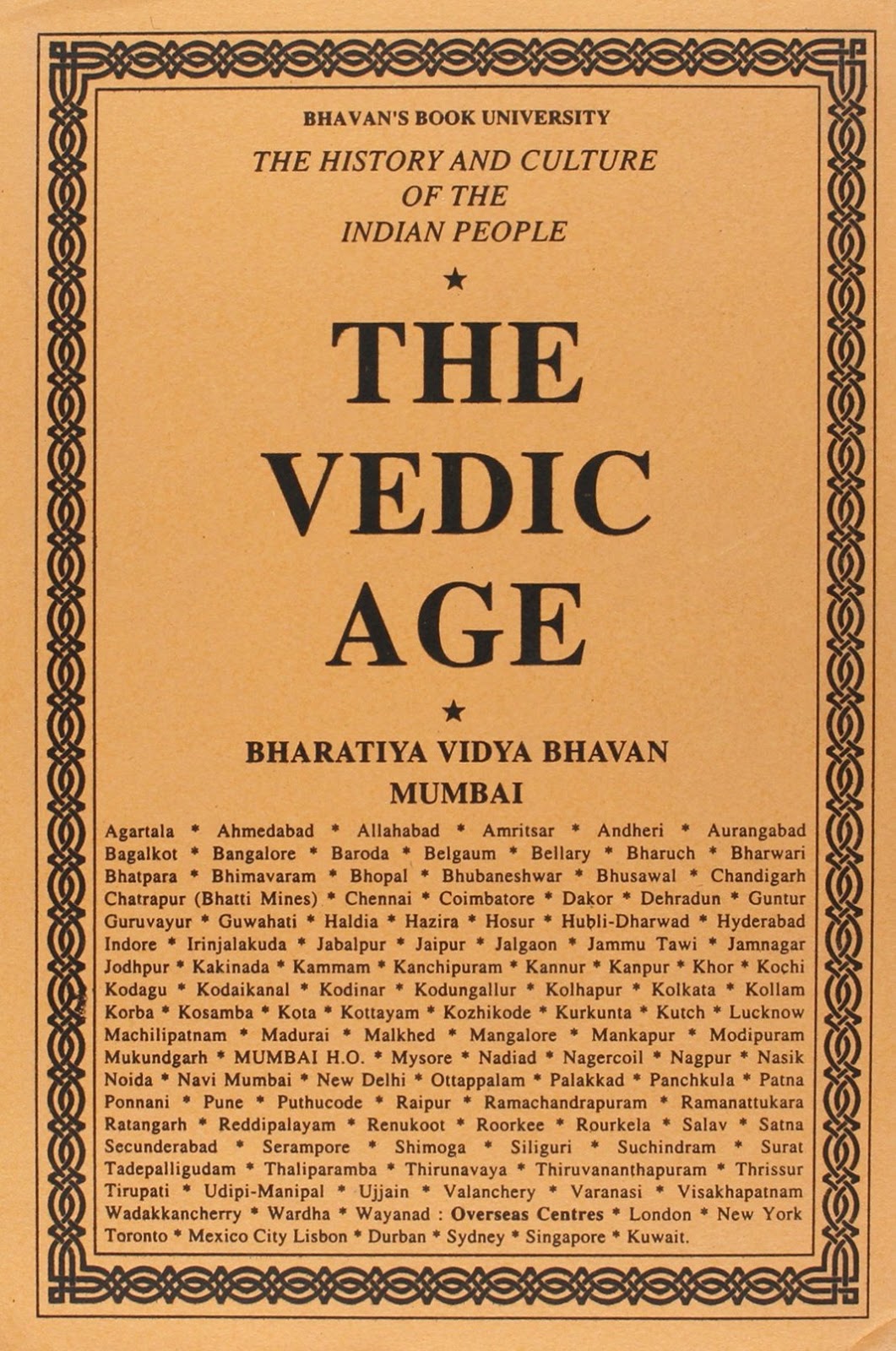#Ancient Culture ( Samskaram ) of Bharatham-3.1 : Swami Krishnananda
========================================================================
-------------------------------------------------------------------------------------------------------------------------
#OPINION : 31/01/2020 : 2040
Chapter 3: The Vedas – the Foundation of Indian Culture -1.
--------------------------------------------------------------------------------------------------------------------
1.
The culture of India can be traced back to the Vedas, especially the Rigveda Samhita. Generally, the Veda is regarded as a religious scripture, and practically every so-called scripture in the world is considered as the basis of a particular religion. Therefore, an idea or an opinion has been formed by people generally that the culture of India is principally a religious culture, and inasmuch as religion is connected with the existence of God, this thought was further developed into the consequence thereof that Indian culture is not connected with this world so much as with the other world. This is a wrong notion, a wholly mistaken view of the content of the Veda Samhita.
-----------------------------------------------------------------------------------------------------------------------
2.
The Samhitas are the basic feature or the face of the Vedas as a whole. There are four sections of each Veda, the four sections being Samhita, Brahmana, Aranyaka and Upanishad. The Upanishads are based on the Aranyakas, the Aranyakas on the Brahmanas, and the Brahmanas on the Samhitas. The mantras of the Veda Samhita are, therefore, the seed of the further development of thought which is the rock bottom of Indian culture.
-------------------------------------------------------------------------------------------------------------------------
3.
Now, it is necessary to dispel the wrong notion that the foundation of Indian culture is otherworldly because religion is otherworldly, because God is not in this world. One thought leads to another thought. If God is not in this world, and He has to be reached in another world, then God becomes an otherworldly reality. This also is a wrong notion. God is not otherworldly, removed from this world. Therefore, religion cannot be regarded as otherworldly; it has a connection with this world. Therefore, the Samhitas are not the foundations of an otherworldly religion. They are connected with this very, very realistic existence of ours.
-------------------------------------------------------------------------------------------------------------------------
4.
That the Veda Samhitas have different meanings from various points of view, I mentioned briefly the other day. I said there are five phases, at least, of the meaning of the Veda Samhita. Adhyatmika means the subjective psychological, and we may say, spiritual aspect; adhibhautika is the objective, the material and the external phase of life; adhidaivika is the transcendental vision, what we call the religious, ecclesiastical and divinely oriented, the so-called otherworldly aspect. The adhiyajnika is the phase of our actual action, work or encounters of this world; the field of activity is adhiyajna. Adhidharmika, the aspect of law and order, the regulative principle of life, is another aspect.
-------------------------------------------------------------------------------------------------------------------------
JAY HIND
JAY BHARATHAM
VANDHE MATHARAM
BHARAT MATHA KI JAY.
========================================================================
-------------------------------------------------------------------------------------------------------------------------
#OPINION : 31/01/2020 : 2040
Chapter 3: The Vedas – the Foundation of Indian Culture -1.
--------------------------------------------------------------------------------------------------------------------
1.
The culture of India can be traced back to the Vedas, especially the Rigveda Samhita. Generally, the Veda is regarded as a religious scripture, and practically every so-called scripture in the world is considered as the basis of a particular religion. Therefore, an idea or an opinion has been formed by people generally that the culture of India is principally a religious culture, and inasmuch as religion is connected with the existence of God, this thought was further developed into the consequence thereof that Indian culture is not connected with this world so much as with the other world. This is a wrong notion, a wholly mistaken view of the content of the Veda Samhita.
-----------------------------------------------------------------------------------------------------------------------
2.
 |
The Samhitas are the basic feature or the face of the Vedas as a whole. There are four sections of each Veda, the four sections being Samhita, Brahmana, Aranyaka and Upanishad. The Upanishads are based on the Aranyakas, the Aranyakas on the Brahmanas, and the Brahmanas on the Samhitas. The mantras of the Veda Samhita are, therefore, the seed of the further development of thought which is the rock bottom of Indian culture.
-------------------------------------------------------------------------------------------------------------------------
3.
Now, it is necessary to dispel the wrong notion that the foundation of Indian culture is otherworldly because religion is otherworldly, because God is not in this world. One thought leads to another thought. If God is not in this world, and He has to be reached in another world, then God becomes an otherworldly reality. This also is a wrong notion. God is not otherworldly, removed from this world. Therefore, religion cannot be regarded as otherworldly; it has a connection with this world. Therefore, the Samhitas are not the foundations of an otherworldly religion. They are connected with this very, very realistic existence of ours.
-------------------------------------------------------------------------------------------------------------------------
4.
That the Veda Samhitas have different meanings from various points of view, I mentioned briefly the other day. I said there are five phases, at least, of the meaning of the Veda Samhita. Adhyatmika means the subjective psychological, and we may say, spiritual aspect; adhibhautika is the objective, the material and the external phase of life; adhidaivika is the transcendental vision, what we call the religious, ecclesiastical and divinely oriented, the so-called otherworldly aspect. The adhiyajnika is the phase of our actual action, work or encounters of this world; the field of activity is adhiyajna. Adhidharmika, the aspect of law and order, the regulative principle of life, is another aspect.
-------------------------------------------------------------------------------------------------------------------------
JAY HIND
JAY BHARATHAM
VANDHE MATHARAM
BHARAT MATHA KI JAY.
========================================================================









Comments
Post a Comment